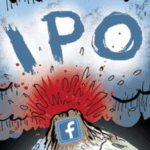Integral Ad Science broke a streak of punishing quarterly earnings reports for public ad tech companies when it announced better-than-expected Q4 results on Friday morning.
The company’s total revenue of $153 million in Q4 was up 14% year over year. IAS earned $530 million in 2024 at a 12% growth rate.
IAS shares jumped by about 15% after the call, and the stock is now above where it stood on February 12, when The Trade Desk fell short of its earnings forecast, and the entire ad tech sector dropped in tandem.
How did IAS outperform?
Mark Kelly, an internet sector analyst at investment bank Stifel, kicked off the Q&A portion of the earnings call by noting that IAS had managed to outperform the broader ad tech category.
The opening question is often a layup.
He then asked if IAS could corroborate what DoubleVerify reported during its earnings call earlier in the week, which is that ad spend froze at the end of the year. DV and Magnite both attributed their respective Q4 slumps in part to post-election malaise.
IAS CEO Lisa Utzschneider noted that the advertiser side of the business “did see some political headwinds,” but added that the publisher side benefited from an increase in political spend following the election.
In fact, the fourth quarter was a strong outlier for IAS’s publisher segment, which grew 30% year over year in Q4 and by 20% over the course of 2024.
IAS is also finding security by locking down exclusive or limited partnerships with big platforms. Among its Q4 financial highlights, IAS cited new formats and partnership expansions with Reddit, Google’s Display & Video 360, the Amazon DSP and Facebook and Instagram for Feed and Reels.
The only exception to the list of Q4 highlights was an announcement of a new product IAS released in December through its partnership with Lumen, an eye-tracking and attention measurement company.
Lumen is an interesting case. Its data is part of IAS’s overall attention measurement rating, and late last year Lumen was reportedly in acquisition talks with DV.
During the call, Utzschneider also noted that Sincera is a strategic partner “powering portions of several of our products.” After its acquisition by The Trade Desk in January, Sincera’s metadata license will continue for at least the first half of 2025, she said.
Utzschneider did not specify what might happen after that.
What’s next?
IAS appears to have reached an inflection point, whereby it’s evolving away from its one-time status as an impartial ad verification and brand safety and suitability vendor toward becoming a full-funnel ad performance engine.
“I know I keep hitting the performance drum,” Utzschneider responded to one investor who had asked about the company’s relatively optimistic forecast in comparison to The Trade Desk, Magnite, DoubleVerify and others, which set cautious outlooks for Q1 2025.
And she’s not joking. The word “performance” was mentioned nearly 30 times by IAS execs on the call.
But there’s a reason for the focus on performance. IAS is investing in products that bring it closer to advertiser activation. Greater adoption of its pre-bid products means IAS can determine where an ad dollar goes and at what bid. It’s no longer primarily a post-bid service that filters out inappropriate or non-human traffic and reconciles ads after they’ve run.
When IAS is able to link media quality signals with cost data, Utzschneider said, it can help advertisers plan their pre-bid buying.
IAS may not go so far as to take on the DSP mantle, but embracing terms like “performance,” “activation” and “optimization” is a strong indicator of where the business is heading.

















